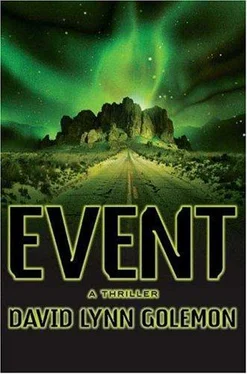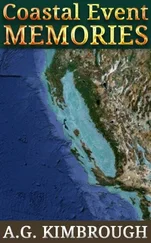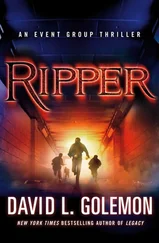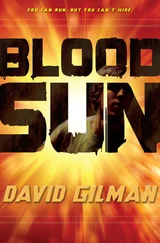As everyone took in the second picture after Niles stepped aside, their eyes widened and not just a few hearts beat a little faster. Gasps and exclamations were voiced from around the table. Most leaned closer trying to take in what was clearly something most had never considered possible. The room suddenly became like a vacuum, and a few of the Group even leaned back and closed their eyes, then looked again as if that would change the image they were seeing.
"What in the hell is that?" Walter Dickinson, the head of the forensic sciences, asked, knowing full well what was depicted.
"I'll tell you what it looks like, Walter. It looks kind of like a flying saucer."
Collins looked from the picture, then back to Lee. Then he studied the photo again. It was definitely saucer-shaped, round and flat like a plate, with what looked to be a smaller dome on top.
"I've been staring at these pictures since early afternoon and I still can't believe what I see, but there it is, clear as hell. Those two fighters were chasing one damn big flying saucer."
Collins stood and walked to the easel for a closer look at the computer-enhanced picture. The others calmed their chatter and watched. Jack brought his right index finger up and traced a nearly invisible line from the back of the saucer to about two hundred feet behind the craft.
"Any idea what this might be, Dr. Compton?" Collins asked from in front of the easel.
"Only speculation at this point, it may be damage of some kind. We believe it was leaking fluid."
"Not caused by our fighters?" Jack asked, seeing the smaller Tomcats far behind the saucer.
"Not according to the chatter on the radio," Niles answered.
Jack returned to his seat.
"At about one and a half minutes into this Event, the fighters believed they had a second contact approaching at several thousand miles per hour." Compton let that sink in. "This speed estimate was confirmed by Boris and Natasha's Doppler radar, and we have a printout of the actual speed of that second bogey."
"I take it the carrier battle group was aware of the situation by this time?" Virginia Pollock asked. She was in her early forties and had accepted Dr. Compton's offer to come from the General Dynamics Corporation and be assistant director. Now she was the department head of Nuclear Sciences.
"Negative, Virginia. All radio contact between the carrier and her aircraft were lost as they approached the object."
Compton reached up, then hesitated before removing the picture.
"Now, this is where we believe the attack occurred."
The room went deathly silent at the mention of the word attack. He took the picture of the two planes and the saucer down. The third picture showed the second Tomcat falling, really nose-diving, out of the frame. But there was something strange about it; this picture had a different color hue to it, a greenish color, possibly explained away by bad computer imaging.
"Right here the pilot of the second F-14, the wingman, called a Mayday. His engines had shut down, and before you ask, there's nothing wrong with the picture. That light is from a source other than the planes or the craft they were chasing."
"What source?" Everett asked, standing to see the image better.
"This one." Niles Compton removed the picture, revealing the new image beneath. Everyone now stood to get a better look.
"Damn," Everett said. A chorus of other exclamations followed. Jack could only clench his jaw muscles.
A second giant saucer was in the picture Niles had uncovered. The F-14s were far below it as the picture showed the second UFO closing in on the lead Tomcat. Without saying a word, Compton removed the picture and replaced it with another. Now several of the Group members sat hard into their high-backed chairs. Talking started all at once after the picture was digested.
The image showed in horrible detail the second saucer slamming into the lead navy fighter from the rear. In this still shot, the plane was already coming apart in flames. The image was so clear you could see either the pilot or his radio intercept officer falling free of the aircraft with his seat still attached.
The senator continued to write, having said virtually nothing to this point, but when he did stop writing notes and look up, he eyed Major Collins, who continued to study the picture. Lee tapped the tabletop with the knuckles of his right hand. It took three raps to finally get everyone's attention. The old man took a deep breath, and as he stood, he gestured Compton over to his side, speaking to him in a low tone. Then Compton went to his seat and lifted a large file to the table and then waited.
Lee started talking, looking toward the last picture that had been shown. "Major, this is exactly what Niles and I were trying to explain earlier about our Group. The few people in government who know we exist, and that's just the Joint Chiefs and the National Security Council, would say this isn't in our area of expertise, that it should be the military's problem, but this is what we call an Event , this could be life-altering on any level you care to look at. We have an advantage," he said, looking at all the faces around the table. "We have some experience with this sort of Event, or I should say, I do, in my younger days when I was director of this underground anthill."
Several people mumbled their surprise at what the retired senator had just said, but it quickly died down.
Alice slipped the senator two small pills and he quickly swallowed them with a sip of water, then he removed his cane from die edge of the table where he had hung it and stood and limped to the picture on the easel and tapped it with his index finger.
"President Truman first appointed me to this Group in 1945, and amazingly we had a similar craft follow the same trajectory as this current one two years later, on July the second of 1947. A little town in New Mexico was rocked by an explosion," Lee said, and paused for a moment. "I'm sure you know where I'm headed with this."
Collins watched Lee as the old man recalled the past. He was looking even older than he had this morning, and Collins wondered what medication he had taken just a moment before.
"The Roswell Incident," stated Celia Brown, an African-American professor of natural history from Cornell.
"Correct, the Roswell Incident." Lee then popped the picture again with his fist, rocking the easel. "Roswell, New Mexico. From the evidence collected back in '47, we had us a flying saucer crash, ladies and gentlemen. And at this moment I'm playing a hunch, just a spec of my old memory returning, if you'll so indulge me. If this guess of mine plays out, we have a very serious and dangerous problem on our hands. Just before Boris and Natasha lost contact with the two objects, indicating and confirming the facts we overheard on the carrier's radio frequency that the objects did have some sort of stealth capability, we got a possible track on their trajectory."
"You said that the satellite had lost their track, sir?" Everett asked.
The old man limped back to his chair, leaning on the cane even more. "Yes, after the targets went stealth, they vanished from radar and the imager on Natasha went out of range. But it was her track that we used to project the course. You see, it didn't gain altitude, maybe from the suspected damage, we don't know. So, if it continued to lose that altitude, it may just have come down somewhere."
Others around the huge conference table were looking from the pictures to one another, trying to absorb it all.
"The first craft not being in stealth mode I can understand, maybe damage, but why would the second craft not use the advantage of stealth? It doesn't make a whole lot of sense," Virginia Pollock said.
"We don't have any answers, just good questions like yours, Virginia," Lee said. "But it may very well be that the second craft didn't care if it was seen at that point or not, knowing it would not be tracked afterward. We just don't know and it's dangerous to speculate."
Читать дальше












